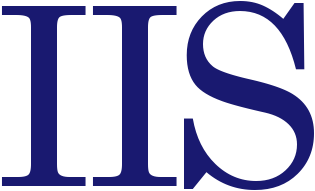We provide technology education with the goal of providing decision makers with the best approach to solving problems through the examination of existing processes. A comparison between leveraging new approaches on current processes versus improving processes without requiring new technology provides a full view of feasible approaches to solving a problem.
A simple example of the service offering is as follows. A company may want to realize a cost savings on an existing process where human resources are leveraged to input paper forms into a system for computer processing. The natural approach offered by many vendors is to replace humans with Artificial Intelligence (AI) solutions capable of performing an automated data ingestion step. While the AI solution is not perfectly accurate and is costly in terms of compute resources, it provides an overall cost savings to the company. Our approach is to compare this new technology solution with other possible solutions, including recasting the original process to eliminate the source of the issue (in this case a handwritten form). Our report to this client might include a time/material/equipment cost comparison of AI implementation versus process recasting in the approach of a web based form which completely eliminates hand written forms. Our services may include rough and preliminary designs of each approach, simulations and calculations showing data flows and throughput at each step of the process, initial prototyping of each proposed method, and an overall cost of ownership and bottom line impact analysis.
The basic terms of data and process are reviewed and defined for each client solution. Here are some generic definitions that we use in the discovery and measurement of existing and future technologies.
1) Data Defined – as we move about in our lives, we experience the physical world from a analog perspective. This means we observe with our 5 senses a 3 dimensional physical space with a 4th time dimension of time. As we employ edge devices such as smart wearables, smartphones, digital assistants and internet connected devices in our homes (lights, thermostats, appliances, etc.) we generate data. This data is a conversion from our analog world to a digital format using chips and functions called analog to digital converters (ADC).
Let’s use a person to person conversation example. When you speak in person to another, your voice vibrates the air the listener’s ear feels the air vibration and the brain hears the words you have spoken. In the digital version, your smartphone microphone converts the vibrations into digital samples, transmits the samples over the internet to the listener’s smartphone, which converts the digital sample to an analog equivalent, which travels from the speakers to the listener’s ear.
In a person to person conversation, we see the person speaking and we know the person is present from our mutual proximity. There is a cost to this analog method in that we must both be present, but a benefit as we can communicate with additional dimensions of vocal intonation, facial movements, and physical gestures.
In the digital example, we remove the cost of presence and now have an unlimited distance of communication. But one immediate impact is how do we now know that the person speaking is really the intended participant? If there is background noise, how do we know the words we think we hear are really the words actually spoken? Another value added to digital implementation is additional processes including the abilities to record the call or using machine learning algorithms to interpret the details of the call for further processing.
Data provenance is the primary area we look at in our services and product solutions.
2) Process Defined – our lives, work and play activities consist of starting and completing processes. When rise in the morning, we have a number processes that need to complete in order to move on with the events of the day. We have similar repeatable processes to travel to work or school, including arrival, authenticating access, and following through with a number of authorized and required processes.
Many processes are defined by higher-level policies. All processes follow prescribed procedures to collect inputs, follow decisions, and produce outputs.
Current Federal and State policies focus on data privacy with most following a definition including fields such as a person’s name, Social Security number, State of Residence Driver’s number, financial accounts information, and health/medical information. Some States are also adding biometric information.
